 January 8, 2015 John E. Ross, KD8IDJ, Editor
| ||||||||||
League's Centennial "the Most Extraordinary Event" for ARRL President As the ARRL's Centennial drew to a close, ARRL President Kay Craigie, N3KN, reflected that the year-long celebration helped to rejuvenate Amateur Radio by including as many people as possible, providing lots of on-the-air fun, and promoting learning and doing. She also believes that the spirit of the Centennial will live on going forward, as Amateur Radio enters its second century. "The ARRL Centennial has been the most extraordinary event in my Amateur Radio life," President Craigie remarked. "How fortunate I am to have been a ham in this anniversary year, let alone to have been President of the ARRL."
President Craigie said that Centennial activities, such as the Centennial QSO Party and the W1AW portable operations in all 50 US states and some territories, were aimed at giving members a chance to learn, to feel, and to do, and in the process generating positive feelings about being a part of Amateur Radio and of the ARRL. "We wanted members to have fun participating in activities, both in person -- at the national and regional conventions -- and on the air," she recounted. "We wanted the events and experiences to be inclusive -- something all members could participate in, if they wanted to." So, every member was given a point value in the Centennial QSO Party. And, recognizing that not everyone could come to the National Centennial Convention in Hartford, the League designated several major ham radio gatherings around the US as regional centennial conventions, so everyone would have an opportunity to participate. Convention forums as well as information and articles in QST and in electronic media provided something every member could learn from and enjoy, she said. "I recall suggesting that we could move W1AW around the country," she said. "I was just thinking about the call areas, but the staff exploded that into every state and several territories." "Because of the good work done by the ARRL Headquarters staff and a huge number of enthusiastic volunteers all over the country, the Centennial successfully achieved those goals beyond what we were able to imagine," President Craigie said. "Thousands of ARRL members chased W1AW and worked each other across the bands and modes, having tremendous fun doing it. In QSOs and on their QSL cards, members told me how much they appreciate what the ARRL does for Amateur Radio."
"It really is all about the people and the fun," she observed. President Craigie reported logging more than 18,100 contacts during 2014, including 1149 on the last day of the year, most of them from calling "CQ Centennial." "For the first time in my life I was the most popular kid in school," she quipped. "I won't forget the rush of that feeling when I'm back to being just another signal from Virginia." President Craigie said some have asked what the ARRL will do next. She said that while the League doesn't want to wear out the exuberance and goodwill the Centennial events engendered, "it's clear that operating challenges outside of the traditional menu of contests and awards have a great appeal." She expressed the hope that, in the months and years ahead, all hams will seek out other operating challenges sponsored by all sorts of ham radio groups and keep the bands alive with signals. "To everybody: Thanks for coming to the birthday party!" she concluded. "Happy New Year!" Read more. ARRL Lab Receives a Major Upgrade, Thanks to Tektronix The ARRL Laboratory now has significantly superior measurement capabilities, thanks to Tektronix Corporation's generous donation of a mixed-domain bench oscilloscope (model MDO4104B-3). Alan Wolke, W2AEW, Senior Applications Engineer for Tektronix, visited ARRL
Headquarters on January 6 to introduce the Lab staff to the sophisticated 'scope. An ARRL Life Member, Wolke arranged for the donation. "This oscilloscope is a huge benefit to us," commented ARRL Test Engineer Bob Allison, WB1GCM. "It will be particularly important, considering the fast-paced evolution of digital technology. The ARRL Lab is grateful to Tektronix, to Alan Wolke, and Tektronix Public Relations Manager Amy Higgins for this generous contribution." The dual-function instrument has a bandwidth of 1 GHz, 5 GS/s for time-domain measurements and can make frequency-domain measurements up to 3 GHz. The MDO4104B-3 replaces the Lab's Tektronix TDS-3052B, a 500 MHz storage oscilloscope. Wolke has personally produced a large number of quality training videos, for radio amateurs wanting to learn more about the practical applications of test instruments. Eastern Pennsylvania Starts the New Year with a New Section Manager Joseph Ames, W3JY, of Malvern, Pennsylvania, became ARRL Eastern Pennsylvania Section Manager on January 1. He will complete the remaining term of former SM, Bob Famiglio, K3RF, the new ARRL Atlantic Division Vice Director.
ARRL Field Services and Radiosport Manager Dave Patton, NN1N, appointed Ames to succeed Famiglio after consulting with incoming ARRL Atlantic Division Director Tom Abernethy, W3TOM. Ames's appointment as Section Manager continues until March 31, 2016. A ham since 1977 and an ARRL Life Member, Ames brings a wealth of Field Organization experience to his new position. He was an Assistant Section Manager in Eastern Pennsylvania from 2008 until 2014 and holds Official Emergency Station and Official Relay Station appointments. He was elected as the new Eastern Area Staff Chair of the ARRL National Traffic System, effective on January 1, taking over that role from Marcia Forde, KW1U. Ames also serves as net manager of the Eastern Pennsylvania Emergency Phone & Traffic Net and of the Pennsylvania Eastern Area RACES Net. Ames is the training and safety officer for Delaware County ARES/RACES and is active with the Chester County ARES/RACES organization. He's a Volunteer Instructor for ARECC and a Volunteer Examiner with the ARRL VEC. Read more. Revised ARRL HF Contesting Guidelines Now Available The ARRL HF Contesting Guidelines have been revised, and the latest edition now is available. The latest guidelines, updated by an ARRL Contest Advisory Committee (CAC) team, address changes in technology that have affected contesting in recent years -- including "The materials presented are facts, opinions and best practices," Wagner said. "Information presented in the document is not mandatory, and the individual contest operator is free to accept or reject its wisdom. In all cases, contest rules take precedence, so the collective advice is always to read, understand, and follow the contest rules" in letter and spirit, he said. The Guidelines document presents frequently asked questions and answers and additional material about common situations encountered in HF contesting. The questions and responses only address HF contesting, and not VHF+ contesting. ARRL Contest Branch Manager Matt Wilhelm, W1MSW, expressed his appreciation to the committee for taking on the task of updating the guidelines. "We often refer new contesters to the document, so the effort to revise it and include new technologies that affect radiosport is essential," he said. A PDF version of the Guidelines is available for download. Address comments and suggestions about the HF Contesting Guidelines to the ARRL Contest Advisory Committee member from your ARRL Division. ARRL Solicits Nominations for Six Awards The ARRL is inviting nominations for the Hiram Percy Maxim Award -- the League's premier award honoring a young Amateur Radio licensee -- and for awards that recognize educational and technological achievement in Amateur Radio.
The ARRL Board of Directors selects recipients for these awards. Winners are typically announced following the Board's July meeting. More information about these awards is on the ARRL website, or contact Sean Kutzko, KX9X, at ARRL Headquarters. Telephone (860) 594-0328. ARRL Survey Underway The ARRL has asked an independent research company specializing in survey research to conduct a survey of Amateur Radio operators in This most recent survey is being conducted by mail and e-mail and will include representative populations of Amateur Radio operators from among ARRL members, as well as non-member FCC licensees. While not every member will receive a survey, participation from those individuals who are selected is critical for the success of this project. Responses will be kept confidential and only used in tabulation with others; no data about survey participants -- including contact information -- will be shared with anyone. Contact ARRL Marketing Manager Bob Inderbitzen, NQ1R, if you have any questions about the survey. Hamvention Chair: "The Show Will Go on" at Aging Hara Arena Despite financial struggles dogging the owners of Hara Arena, site of the Dayton Hamvention® since the 1960s, the 2015 Hamvention General Chairman Jim Tiderman, N8IDS, has told ARRL that he expects the world's largest Amateur Radio show to continue there -- this May and in the years ahead. Tiderman was reacting to recent media accounts detailing the fiscal woes of the aging Hara complex in Trotwood, Ohio. He said Hamvention's sponsoring Dayton Amateur Radio Association (DARA) and Hamvention officials have been in conversation with Hara's owners, the Wampler family, regarding the future of the 165,000 square foot, six-building complex.
"Both Hamvention and DARA have absolute confidence in [the Wampler family's] guiding their corporation through the steps in the plans in place to keep Hara operating for years to come," Tiderman said. "Given the time frame they are working with right now, we simply stand by them and repeat, 'the show will go on.'" Last year, Dayton Hamvention attracted nearly 25,000 visitors. Dayton TV station WDTN-TV reported last month that the 50-year-old Hara Arena was facing financial problems and had cut back on its full-time staff to save money. Karen Wampler, Hara's Director of Marketing, has told the media that it's become difficult for Hara Arena to compete with other Miami Valley venues, such as the Nutter Center at Wright State University and the downtown Dayton Convention Center. The Hara complex needs money for renovations and deferred maintenance, she said, and "the ownership model needs to be changed." Wampler told the Dayton Daily News in December that while the family cares about the facility, it is limited in what it can afford. Dayton Hamvention takes place May 15-17. Read more. Nuts and Volts Magazine Launches New Ham Radio Column by Ward Silver, N0AX Well-known ARRL Contributing Editor Ward Silver, N0AX, has debuted a new column for Nuts and Volts magazine -- "The Ham's Wireless Workbench." Nuts and Volts is written for "the hands-on hobbyist, design engineer, technician, and experimenter," which describes a lot of radio amateurs.
"The general idea is to open the door to ham radio for electronically inclined folks who either may not be aware of the hobby or who may find some of our technology interesting and/or useful," Silver said. "This is an excellent opportunity to provide outreach to the active and growing electronic 'maker' -- or do-it-yourselfer -- audience." Every other month, Silver will cover a topic that showcases some aspect of Amateur Radio technology that is not typically covered by non-ham media. Such topics, he said, would include such things as antennas, transmission lines, connectors, propagation, transmitters, and modulation -- areas not often discussed outside of QST and other ham radio publications. His first column in the January 2015 issue is an introduction to antennas -- specifically how to make a VHF/UHF ground plane for listening to NOAA weather stations. First, though, Silver acquainted his readers with ham radio and pointed out that several Nuts and Volts editorial staffers -- including the print and digital publication's editor, Bryan Bergeron, NU1N -- as well as contributors and many readers are radio amateurs. Silver pointed to a new Amateur Radio Technology Portal he developed for the ARRL website that offers links to some of the technical facets of Amateur Radio, without requiring visitors to be familiar with ham radio terminology or jargon. He said he's already received several e-mails through the site. Amateur Radio Volunteers Support Communication in Wake of Southeast Asia Flooding After several days of maintaining emergency communication links on 7.110 MHz in late December, Amateur Radio volunteers remained
active for a while longer to handle local health-and-welfare traffic and any urgent communications in flood-stricken Malaysia. The monsoon flooding that hit parts of Malaysia and Thailand claimed lives and forced thousands to evacuate. The flooding has eased, but clean-up continues. Johnny Tan, 9M8DB, of the Malaysian Amateur Radio Transmitters Society (MARTS) called it the worst flooding in years in northern Malaysia. As a result of the severe flooding 2 dozen people died, and another 250,000 had to evacuate or seek higher ground. Seasonal flooding such as this is typical in Malaysia, but experts described this event as the worst since at least 2004, and badly affected telecommunication systems. -- Thanks to Jim Linton, VK3PC, Chairman, IARU Region 3 Disaster Communications Committee Ham Radio Volunteers Activate Following Severe Weather in the Philippines The Philippine Amateur Radio Association (PARA)'s busy Ham Emergency Radio Operations (HERO) network activated in late 2014 for Tropical Storm Jangmi (Seniang), which made landfall on Mindanao Island on December 29, then moved inland, causing "With successive typhoons bringing rains, the soil got so saturated it caused landslides," explained PARA Chief Operating Officer Thelma Pascua, DU1IVT. "Regional HERO was in place in Mindanao and Visayas. It's now automatic for a lot of hams to coordinate with their local disaster risk reduction and management." Reports of HERO activity came from the affected areas, where more than 80,000 displaced residents were taking shelter in evacuation centers. Outside of the affected areas, Pascua said, routine emergency message-handling training sessions were under way, with regular net control stations stepping aside to allow trainees to prepare for future weather emergencies. According to BBC-Asia, weather warnings were issued, but officials said that some people may have underestimated the situation. -- Thanks to Jim Linton, VK3PC, Chairman IARU Region 3 Disaster Communications Committee; media accounts Special Call Signs On the Air to Celebrate IARU's 90th Anniversary To celebrate the 90th anniversary of the International Amateur Radio Union (IARU) and the 85th anniversary of the Polski ZwiÄ zek Krótkofalowców (PZK), Poland's IARU member-society, 12 special event call signs will be active between January 1 and April 30, 2015.
Special German call signs also will be on the air throughout 2015 to mark the 90th anniversary of the IARU and the 65th anniversary of the Deutscher Amateur Radio Club (DARC) -- Germany's IARU member-society. The call signs are DJ90IARU, DK65DARC, and DL65DARC. DARC is offering a DARC 65 Award. ARTSAT2: DESPATCH (FO-81) Satellite Goes Dark The ARTSAT2: DESPATCH sculpture/satellite (FO-81) has stopped transmitting. The satellite was one of two carrying Amateur Radio payloads that were launched December 3 onboard a Japan Aerospace Exploration Agency (JAXA) vehicle into an Earth-escape orbit as piggyback payloads of the Hayabusa 2 asteroid sample-return mission into deep space. Crafted as a physical art object, ARTSAT2: DESPATCH transmitted a CW beacon on 437.325 MHz. The other Amateur Radio payload was Shin'en 2 (Abyss 2). Ground controllers at Tama Art University, who had estimated the spacecraft's battery would last for 27 days, concluded the satellite's mission on January 3.
"DESPATCH will continue to orbit around the sun as an artificial asteroid," said Akihiro Kubota, a Tama Art University faculty member. "By examining the calculated results for the local minimum value of the distance between the Earth, DESPATCH will approach to less than 1 million km from Earth after about 350 years." The actual sculpture was created using a 3D printer. Kubota expressed appreciation to the many Amateur Radio operators who received and reported the "super-weak" CW signal from DESPATCH's 7 W transmitter in deep space. An algorithm running on the onboard computer drew on readings from all of the spacecraft's sensors to compose and encode poetry "reflecting not only the sensor data but the artist's subconscious personality." The ground team used a "cooperative data reconstruction" approach, piecing together the received fragments of the satellite's poetry broadcast to reconstruct the whole. Kubota said that while the satellite has stopped transmitting, "the life of DESPATCH as a sculpture around the Sun is almost eternal." Read more. -- Thanks to AMSAT News Service via Akihiro Kubota NCJ Ends Sponsorship for the North American Sprint SSB Event National Contest Journal (NCJ) has ended its sponsorship for the phone version of the North American Sprint. Going forward, the magazine will support Sprint events for CW and RTTY only. The magazine cited dwindling support for its decision.
Barkey conceded that the reasons for the decline in participation "are not obvious," but he pointed to competition from other operating events on any weekend and the challenge for newcomers and casual participants of the "frequency-hopping nature" of the 4-hour Sprint. "NCJ remains committed to supporting innovative and challenging contests, including SSB contests, and we welcome any ideas that readers have to offer," Barkey said. ARRL Roanoke Division Assistant Director, DXpeditioner Jim Wise, W4PRO, SK ARRL Roanoke Division Assistant Director and DXpeditioner Marion A. "Jim" Wise, W4PRO, of Virginia Beach, Virginia died December 31. He was 86. An ARRL Life Member, Wise was well-known within the Tidewater Amateur Radio community.
Licensed in 1948 as W8YHV in his native Ohio, he served in the US Air Force during the Korean War, then worked for NASA until he retired in 1988. He was a part of regular special event ham operations from the museum battleship USS Wisconsin (N4WIS). W4PRO belonged to the First-Class Operators Club, the A1 Operators Club, and the Quarter Century Wireless Association. He was involved in several DX operations from 1970s until 2004. A CW aficionado, he was on the DXCC Honor Roll and had completed 5-Band DXCC and 160 Meter DXCC. Survivors include his wife Linda, W7PRO. A memorial service will be held on Saturday, January 10, at 11 AM at the West Neck Village Hall, 2580 Signature Drive, Virginia Beach. A Century of Amateur Radio and the ARRL For years, the ARRL had been requesting the FCC to state that Commission rules preempted homeowners association restrictions or limitations on Amateur Radio antennas. At the end of 2001, the FCC suggested that the League take its case to Congress. ARRL representatives discussed the issue with members of Congress in February, a visit that ARRL President Jim Haynie, W5JBP, called "the best yet" for ham radio. H.R. 4720 was introduced in May. It would
have required homeowners associations to reasonably accommodate Amateur Radio antennas. During 2001, four North American distance records were set on 10, 47, 241, and 322 GHz, demonstrating that technical prowess, hard work, and persistence can lead to extraordinary technical accomplishments. VE4MA and W5LUA made the first EME contact on 24 GHz in August. By early 2002, radio amateurs and the ARRL were looking at digital voice emissions as a potential new mode. On January 31, 2002, President George W. Bush spotlighted five Florida volunteer groups, including Volusia County ARES. During his visit, the president addressed the Northern Florida ARES Net on 75 meters. An excellent nostalgia article appeared in the June 2002 QST -- "The First Field Day," authored by W0AR, who operated in that 1933 event as W9NFV. Some 50 portable stations participated, causing ARRL's Ed Handy, W1BDI, to prophesy, "The enthusiasm greeting our first Field Day augers well for future similar occasions." On June 21, 2002, signals from OSCAR 7, given up for dead 20 years earlier, suddenly reappeared! -- Al Brogdon, W1AB The K7RA Solar Update All solar activity indicators rose this week -- sunspot numbers, solar flux and geomagnetic indices. On January 7 the interplanetary magnetic field tipped south, opening a crack to admit solar wind. This triggered the largest geomagnetic storm since September 2014. That same day the planetary A index jumped to 38, pushing the average for the week to 17.7. The previous 7 days (the last 7 days of 2014) the average planetary A index was 13.9.
The latest prediction has solar flux at 155 and 160 on January 8-9, 165 on January 10-11, 170 on January 12, 175 on January 13-15, then 170, 165, 160, 155, 145, 140, and 135 for January 16-22, and reaching a minimum at 130 on January 23-27. Solar flux then rises to a maximum of 175 on February 8-11. Predicted Planetary A index is 20 and 15 on January 8-9, 10 on January 10-12, 8 on January 13, 5 on January 14-20, then 10, 15, and 5 for January 21-23, then 10, 18, and 15 for January 24-26, then 8, 5, 10, and 12 on January 27-30, 15 on January 31 through February 1, then 10, 8, and 18 on February 2-4, 10 on February 5-7, and 5 on February 8-16. This weekly "Solar Update" in The ARRL Letter is a preview of the "Propagation Bulletin" issued each Friday. The latest bulletin and an archive of past propagation bulletins is on the ARRL website. In Friday's bulletin look for a 6 meter report, an updated forecast, and more information on propagation to those WWVB clocks, discussed last week. Send me your reports and observations. In Brief...
Just Ahead in Radiosport
See the ARRL Contest Calendar for more information. Upcoming ARRL Section, State, and Division Conventions and Events
Find conventions and hamfests in your area.
Subscribe to...
Free of charge to ARRL members...
| ||||||||||
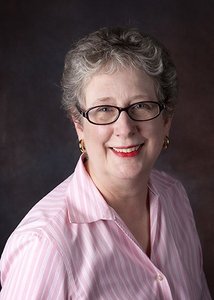
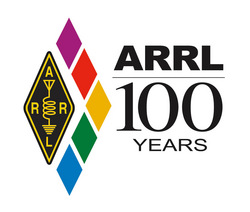 President Craigie said that as the Centennial year played out, people were stopping by on her frequency just to say how much fun they'd had helping the League to celebrate its 100th anniversary. "One member said he had not been on HF for 20 years, sticking to VHF, but got back on HF for the Centennial. Another member said he thought the events have been a huge shot in the arm for Amateur Radio."
President Craigie said that as the Centennial year played out, people were stopping by on her frequency just to say how much fun they'd had helping the League to celebrate its 100th anniversary. "One member said he had not been on HF for 20 years, sticking to VHF, but got back on HF for the Centennial. Another member said he thought the events have been a huge shot in the arm for Amateur Radio."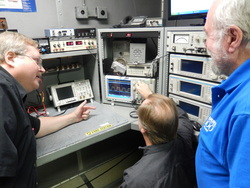
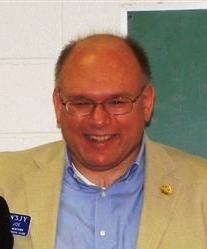
 remote station operation -- and present a current understanding of contesting standards and practices. Some sections also have been rewritten and reorganized to improve readability. George Wagner, K5KG, a member of the CAC team that undertook the update, said the goals of the revised ARRL HF Contesting Guidelines are to provide guidance and advice -- especially for new contesters -- and to encourage contest operation that advances the spirit and integrity of radiosport.
remote station operation -- and present a current understanding of contesting standards and practices. Some sections also have been rewritten and reorganized to improve readability. George Wagner, K5KG, a member of the CAC team that undertook the update, said the goals of the revised ARRL HF Contesting Guidelines are to provide guidance and advice -- especially for new contesters -- and to encourage contest operation that advances the spirit and integrity of radiosport.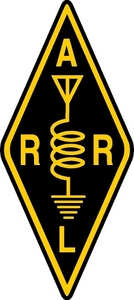 the US.
the US. .jpg)
-hed.jpg)
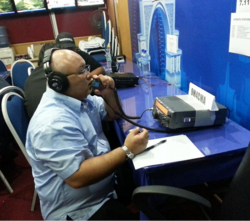
.jpg) massive floods and landslides. According to reports, at least 53 people died, nearly three times the death toll resulting from Typhoon Hagupit in early December. BBC-Asia cited a Philippines Office of Civil Defense report that landslides in the central provinces of Samar and Leyte accounted for at least 29 of the deaths.
massive floods and landslides. According to reports, at least 53 people died, nearly three times the death toll resulting from Typhoon Hagupit in early December. BBC-Asia cited a Philippines Office of Civil Defense report that landslides in the central provinces of Samar and Leyte accounted for at least 29 of the deaths..jpg) There will be six IARU-suffix call signs -- 3Z90IARU, HF90IARU, SN90IARU, SO90IARU, SP90IARU, and SQ90IARU -- and six PZK-suffix call signs -- 3Z85PZK, HF85PZK, SN85PZK, SO85PZK, SP85PZK, and SQ85PZK. The January 1 to April 30 operating period encompasses the 85th anniversary of the PZK on February 24, and the 90th anniversary of the IARU on April 18 -- World Amateur Radio Day. An award certificate will be available for qualifying operators/stations.
There will be six IARU-suffix call signs -- 3Z90IARU, HF90IARU, SN90IARU, SO90IARU, SP90IARU, and SQ90IARU -- and six PZK-suffix call signs -- 3Z85PZK, HF85PZK, SN85PZK, SO85PZK, SP85PZK, and SQ85PZK. The January 1 to April 30 operating period encompasses the 85th anniversary of the PZK on February 24, and the 90th anniversary of the IARU on April 18 -- World Amateur Radio Day. An award certificate will be available for qualifying operators/stations. 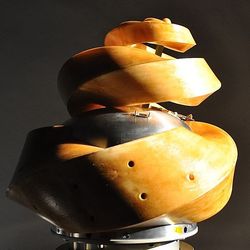
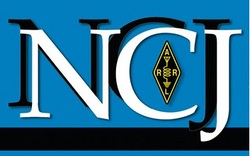 "The September 2014 running of the phone North American Sprint attracted just 52 logs, and we estimate that approximately 3500 contacts took place," said NCJ Editor Pat Barkey, N9RV. He pointed out that the CW Sprint a weekend earlier attracted nearly 10 times that number of entries. Barkey said the lack of "a critical mass of participants" significantly changes the nature of the competition, where winning scores are built through recruiting and coaching new participants, "and the operating experience that makes the CW Sprint so special is essentially lost."
"The September 2014 running of the phone North American Sprint attracted just 52 logs, and we estimate that approximately 3500 contacts took place," said NCJ Editor Pat Barkey, N9RV. He pointed out that the CW Sprint a weekend earlier attracted nearly 10 times that number of entries. Barkey said the lack of "a critical mass of participants" significantly changes the nature of the competition, where winning scores are built through recruiting and coaching new participants, "and the operating experience that makes the CW Sprint so special is essentially lost."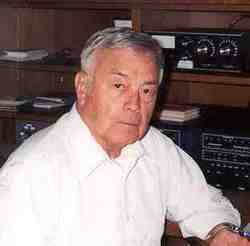
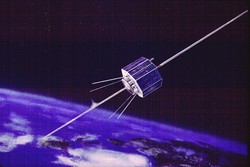
 Average daily sunspot number on the first week of January was 108.1, compared to 102.9 in the final 7 days of 2014. Likewise, average daily solar flux increased from 134.9 to 144.7.
Average daily sunspot number on the first week of January was 108.1, compared to 102.9 in the final 7 days of 2014. Likewise, average daily solar flux increased from 134.9 to 144.7.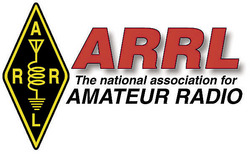 New WAS Award Application Processing on Hold: ARRL is redesigning the basic Worked All States (
New WAS Award Application Processing on Hold: ARRL is redesigning the basic Worked All States ( DX Engineering to Hold "MFJ Day:" It will be "MFJ Day" on Saturday, January 10, from 9 AM to 2 PM at
DX Engineering to Hold "MFJ Day:" It will be "MFJ Day" on Saturday, January 10, from 9 AM to 2 PM at 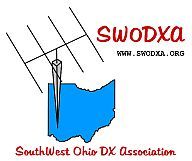 SouthWest Ohio DX Association to Sponsor Dayton DX Dinner: The SouthWest Ohio DX Association (SWODXA) will sponsor the 30th DX Dinner, held in conjunction with the 2015 Dayton Hamvention® on Friday, May 15, at the Dayton Marriott, 1414 South Patterson Boulevard in Dayton. Tickets are available on the
SouthWest Ohio DX Association to Sponsor Dayton DX Dinner: The SouthWest Ohio DX Association (SWODXA) will sponsor the 30th DX Dinner, held in conjunction with the 2015 Dayton Hamvention® on Friday, May 15, at the Dayton Marriott, 1414 South Patterson Boulevard in Dayton. Tickets are available on the 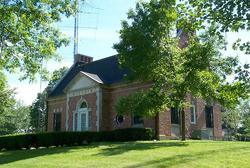 January West Coast 80 Meter Qualifying Run Set: The
January West Coast 80 Meter Qualifying Run Set: The 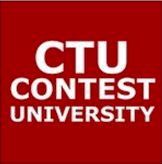 Registration Opens for 2015 Dayton Contest University: Registration is now open for the 2015 Dayton Contest University (
Registration Opens for 2015 Dayton Contest University: Registration is now open for the 2015 Dayton Contest University (







